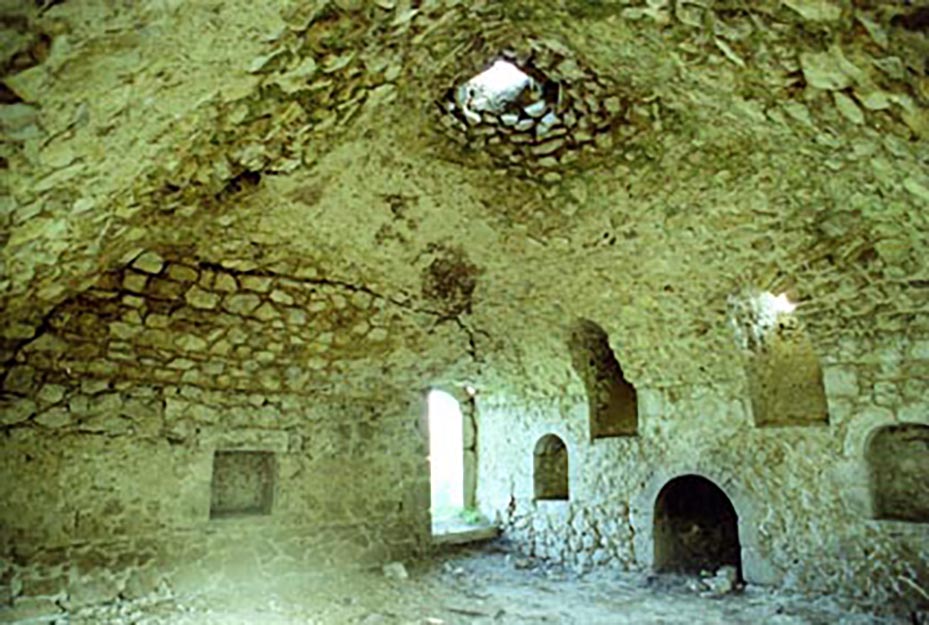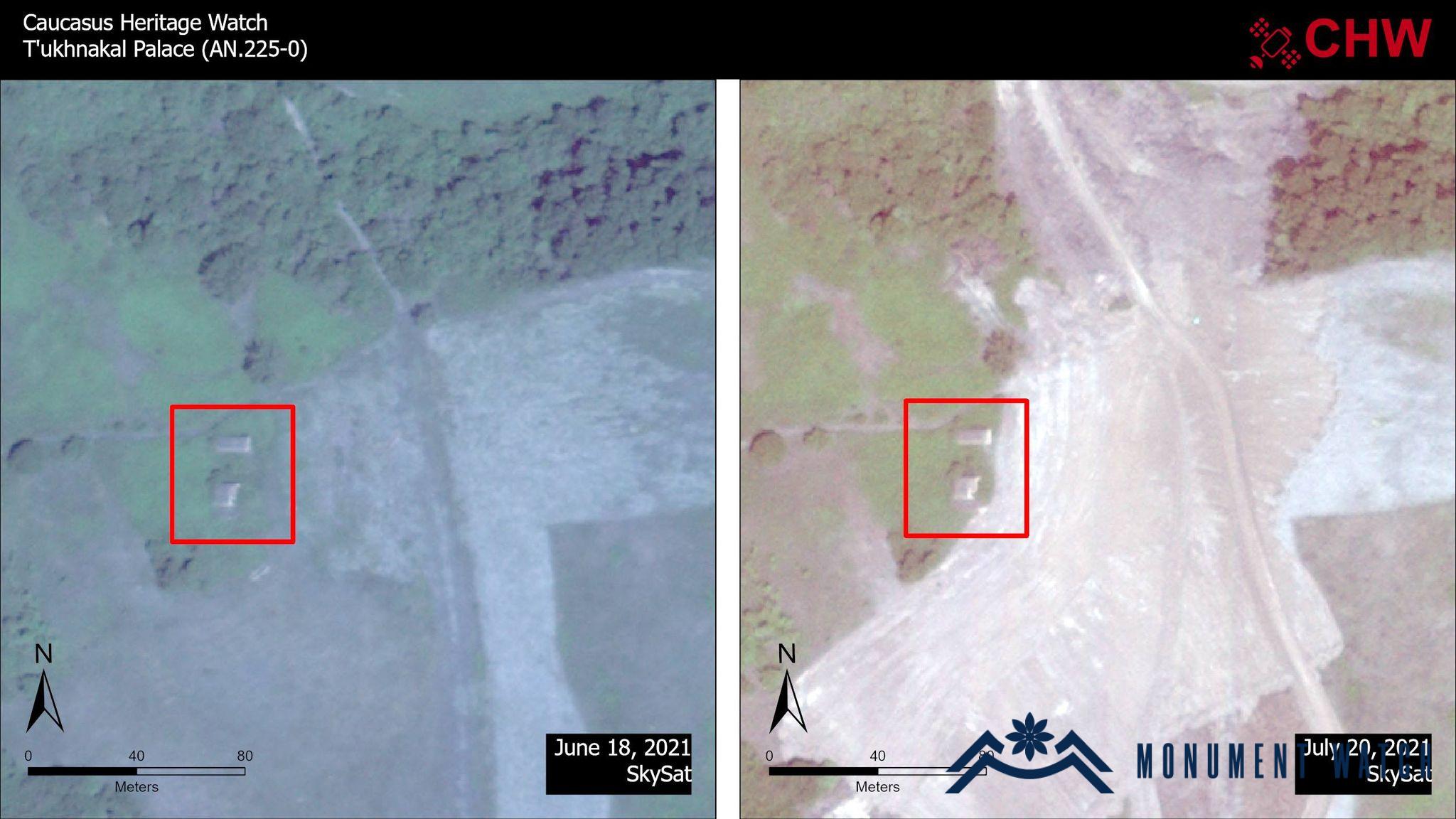Tukhnakal Mansion is in Danger
Tukhnakal mansion is located in Askeran region of the Republic of Artsakh, 1 km West of Moshmhat village and 800 meters southeast of the Gevondyats Monastery. The mansion is located in the village of Tukhnakal in the historical region of Varanda, on the forested slope of the mountain (fig. 1).
The mansion was built in the end of the 18th century. No historical data about the village or the mansion has been preserved. Residents of neighboring villages attribute the mansion to the Melik-Dolukhanians. In the historical sources of the Melik period, there is no mention of the Dolukhanyan family; however, two writings of the 19th century confirm the high position and the reign of the Melik-Dolukhanyan in Varanda region.
All the constructions of the mansion, except the window frames, doors, fireplace framing and arches, were built of the local rough-hewn limestone (fig. 2). For more complete information about the monument, please, visit https://monumentwatch.org/hy/monument/%d5%a9%d5%b8%d6%82%d5%ad%d5%b6%d5%a1%d5%af%d5%a1%d5%ac-%d5%a1%d5%ba%d5%a1%d6%80%d5%a1%d5%b6%d6%84/.
The mansion of Tukhnakal did not suffer during the Artsakh war, but after the occupation of the territory by Azerbaijan, some kind of "construction" work began to be carried out near the complex. Ground leveling with bulldozers reached the protected zone of the monument. This is evidenced by satellite photographs provided by our partners from Caucasus Heritage Watch http://caucasusheritage.cornell.edu/ (fig. 3). Photo source -https://www.facebook.com/CaucasusHW/photos/a.111592397775949/145488937719628.
According to the 1954 Hague Convention for the Protection of Cultural Property in Armed Conflict and the first protocol, the invader undertakes to prevent and, if necessary, suppress any attempt of theft, robbery or misappropriation, and the acts of vandalism. According to the 3rd paragraph of the 9th article of the Second protocol of 1999, any alteration of the cultural property, including the change of use and function, which is aimed at concealing or destroying cultural, historical or scientific evidence is prohibited.
The provisions of UNESCO, ICOMOS, and a number of other documents relating to the protection and preservation of the cultural property, prohibit any external and internal alteration of its form, components, and function that can contradict the World main principles of identity, integrity, cultural value and uniqueness of the Heritage site.


